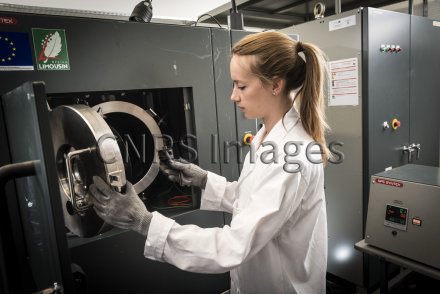Production year
2017

© Jean-Claude MOSCHETTI / IRCER / CNRS Images
20170068_0047
Placing a die containing a non-oxide ceramic powder into a furnace at 1700°C for sintering. This heat will bind the grains of this refractory material. To consolidate a material, it is necessary to reach around 70% of its melting temperature. After that, these materials must be characterised by performing high-temperature tests (at 2000°C) and exposing them to oxidising atmospheres. These ceramic materials, which are resistant to high temperatures and oxidising atmospheres, are used in the aerospace and nuclear (fuel pellet protective cladding) sectors, and even on the catalytic converters in our cars.
The use of media visible on the CNRS Images Platform can be granted on request. Any reproduction or representation is forbidden without prior authorization from CNRS Images (except for resources under Creative Commons license).
No modification of an image may be made without the prior consent of CNRS Images.
No use of an image for advertising purposes or distribution to a third party may be made without the prior agreement of CNRS Images.
For more information, please consult our general conditions
2017
Our work is guided by the way scientists question the world around them and we translate their research into images to help people to understand the world better and to awaken their curiosity and wonderment.